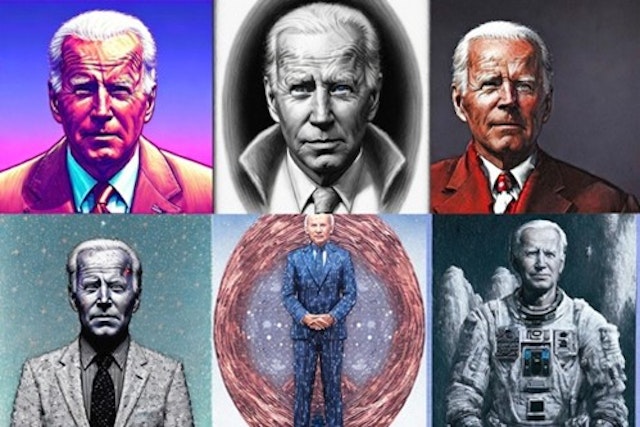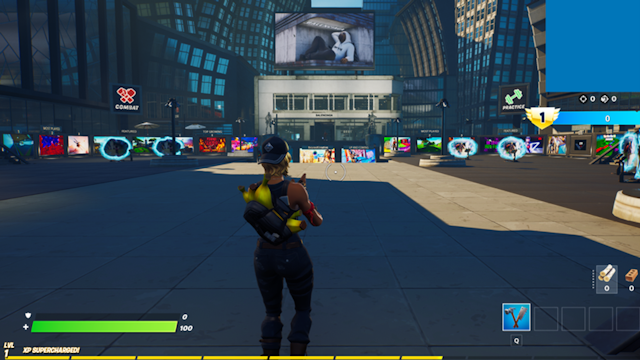The future is less than two years away. MediaCom’s partner and global strategy director, Rob Dickens, with managing partner, group strategy director Sarah Block, laid out the five new opportunities that will transform the potential for innovation over the next 24 months.
It’s a new year and ‘transformation’ is in the air. There are big opportunities in tech and AI and those bold enough to adapt are launching new products, testing ideas and finding early business upsides by moving ahead of the pack.
We’ve identified five big innovations that we predict will radically impact the marketing world over the next two years; innovations that advertisers and their agencies need to start planning for now:
1: Bionic productivity
A toolbelt of AI will soon be the outsourcing default for many types of creativity, helping radically close the gap between our ideas and our potential output. Marketers will benefit by saving on the time agencies would spend creating something themselves or by reducing the need for agencies to engage others when a skill is beyond their capabilities.
The power of bionic productivity has been demonstrated most recently in the deeply consequential release of ChatGPT on OpenAI – a natural language processor designed to create copy for websites, articles, brochures and even write SEO strategies. Similarly, Lensa AI, an image generator built to create you as an AI avatar has been taking over profile pictures across social media.

Whether it’s more AI content like this interview between Steve Jobs and Joe Rogan, or functional tools that offer an easy way to record and summarize meeting notes, we’re only at the beginning of what’s possible in this area.
2: Scaled in-game native advertising
Scaled aggregation of standardized, dynamic ads across multiple game environments will unlock new possibilities for in-game advertising. The integration of ‘real world-like’ ads within game environments has been possible for a while, but activating at scale has meant working with multiple partners and varied format requirements.

Despite audiences under 35 spending more time playing video games than watching broadcast TV, gaming ad spend still only accounts for 6% of total digital advertising. It’s not due to a lack of appetite, most advertisers are eager to reach young audiences; however, the majority have a core competency in creating standardized ad formats, not unconstrained custom creation. We expect to see a scaled, templatized solution unlock this huge unmet demand, helping in-game ads explode by $5.2bn over the next five years.
3: Age of the streaming board game
Netflix is poised to take game nights to a whole new level by plugging JackBox-style gaming into its enormous distribution platform. This modern re-imagination of the ‘board game’ uses the TV screen as the communal ‘board’ and individual mobile devices as ‘controllers’. By focusing on bringing together living rooms around the world, the company will carve out a unique share of the gaming market.

This is an important part of Netflix’s push for revenue diversification, and once it embraces its strength as the most dominant living room brand in the world and fixes its UX to allow streamlined TV/phone integration without the need to download extra apps, it’ll become the leader in re-inventing the notion of a ‘board game’ – a booming category that’s set to be valued at $30.93bn by 2028. Proof of concept is already out there in the wildly popular JackBox games, which have found success despite the lack of a global distribution platform.
4: The upside of deep fakes
Over the next few years, AI-generated ‘deep fakes’ are set to become one of the biggest challenges we’ve faced as a society. AI can now not only create realistic videos of known people but replicate their voices as well. There is a small glimmer of an upside for advertisers. The holy grail of video mass personalization will become more achievable, allowing talent and celebrity ambassadors to address thousands of small audience segments with limited extra production costs.

There are already some highly compelling uses of the technology. Brands such as Cadbury have already found a way to capitalize, like this Cannes award-winning campaign out of India.
5: Shoppable streaming
E-commerce functionality will evolve to enable fully shoppable streaming. When you are watching a show, you will be able to press a button and buy the items in the scene straight from the streaming interface. Shoppable advertising isn’t new, but this would take it one step further by allowing you to seamlessly buy “that jacket” Bradley Cooper wore in A Star is Born from a menu hidden out of sight, so as not to interrupt the streaming experience.

The pandemic fundamentally changed online shopping behavior, fueling big-ticket purchases where consumers previously would have relied on an in-store interaction. With the global market for streaming subscriptions lower than what was anticipated, big steaming players are hugely eager to find other revenue streams. A notable precedent is Love Island’s recent partnership with eBay in the UK.
Get ready for the future
In the words of Scott Galloway: “Contemplating what may happen encourages us to take responsibility for decisions we make in the present”. Now is the time for smart marketers to start placing their bets on the near future they anticipate.
The ones who make the right choices will see those bets transform the way they do business and turbocharge growth. But they’ll only be able to take advantage if they start planning now.
.